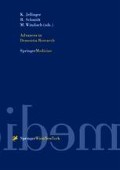Abstract
Excitotoxicity might play an important role in neurodegenerative disorders such as Alzheimer’s disease. In the mouse brain, kainic acid (KA) lesioning results in neurodegeneration patterns similar to those found in human disease. For this study, two sets of experiments were performed in order to determine if Cerebrolysin™ ameliorates the alterations associated with KA administration. In the first set of experiments, mice received intraperitoneal KA injections followed by Cerebrolysin™ administration, while in the second, mice were pretreated with Cerebrolysin™ for 4 weeks and then challenged with KA. Behavioral testing in the water maze and assessment of neuronal structure by laser scanning confocal microscopy showed a significant protection against KA lesions in mice pretreated with Cerebrolysin™. In contrast, mice that received Cerebrolysin™ after KA injections did not show significant improvement. This study supports the contention that Cerebrolysin™ might have a neuroprotective effect in vivo against excitotoxicity.
This work was supported by EBEWE Initiative and was also supported in part by NIH/NIA Grants AG10689, AG05131
Access this chapter
Tax calculation will be finalised at checkout
Purchases are for personal use only
Preview
Unable to display preview. Download preview PDF.
References
Boado RJ (1996) Brain-derived peptides increase the expression of a blood-brain barrier GLUT1 glucose transporter reporter gene. Neurosci Lett 220: 53 – 56
Chen KS, Masliah E, Mallory M, Gage FH (1995) Synaptic loss in cognitively impaired rats is ameliorated by chronic NGF infusion. Neuroscience 68: 19 – 27
Choi DW (1987) Ionic dependence of glutamate neurotoxicity. J Neurosci 7: 369 – 379
Drejer J, Benveniste H, Diemer NH, Schousbue A (1985) Cellular origin of ischemia-induced glutamate release from brain tissue in vivo and in vitro. J Neurochem 45: 145 – 151
Francis-Turner L, Valouskova V (1996) Nerve growth factor and nootropic drug Cerebrolysin but not fibroblast growth factor can reduce spatial memory impairment elicited by fimbria-fornix transection: short-term study. Neurosci Lett 202: 1 - 4
Gray CW, Patel AJ (1995) Neurodegeneration mediated by glutamate and β-amyloid peptide: a comparison and possible interaction. Brain Res 691: 169 - 179
Greenamyre JT, Porter RHP (1994) Anatomy and physiology of glutamate in the CNS. Neurology 44: S7 – S13
Kofler B, Erhard C, Erhard P, Harrer G (1990) A multidementional approach in testing nootropic drug effects (cerebrolysin). Arch Gerontol Geriatr 10: 129 – 140
Masliah E, Fagan AM, Terry RD, DeTeresa R, Mallory M, Gage FH (1991) Reactive synaptogenesis assessed by synaptophysin immunoreactivity is associated with GAP- 43 in the dentate gyrus of the adult rat. Exp Neurol 113: 131 – 142
Masliah E, Achim CL, Ge N, DeTeresa R, Terry RD, Wiley CA (1992a) Spectrum of human immunodeficiency virus-associated neocortical damage. Ann Neurol 32: 321 – 329
Masliah E, Ellisman M, Carragher B, Mallory M, Young S, Hansen L, DeTeresa R, Terry RD (1992b) Three-dimensional analysis of the relationship between synaptic pathology and neuropil threads in Alzheimer disease. J Neuropathol Exp Neurol 51: 404 – 414
Masliah E, Mallory M, Ge N, Alford M, Veinbergs I, Roses AD (1995) Neurodegeneration in the CNS of apoE-deficient mice. Exp Neurol 136: 107 – 122
Masliah E, Alford M, Salmon D, DeTeresa R, Mallory M, Hansen L (1996) Deficient glutamate transport is associated with neurodegeneration in Alzheimer’s disease. Ann Neurol 40: 759 – 766
Masliah E, Westland CE, Abraham CR, Mallory M, Veinbergs I, Rockenstein EM, Mucke L (1997) Amyloid precursor protein protects neurons of transgenic mice against acute and chronic excitotoxic injuries in vivo. Neuroscience 78: 135 – 141
Masliah E, Amorsolo F, Veinbergs I, Mallory M, Samuel W (1999) Cerebrolysin ameliorates performance deficits and neuronal damage in apolipoprotein E-deficient mice. Pharmacol Biochem Beh 62: 239 – 245
Paier B, Windisch M, Eggenreich U (1992) Postnatal administration of two peptide solutions affects passive avoidance behaviour of young rats. Brain Res 51: 23 – 28
Ruther E, Ritter R, Apecechea M, Freytag S, Windisch M (1994) Efficacy of the peptidergic nootropic drug cerebrolysin in patients with senile dementia of the Alzheimer’s type (SDAT). Pharmacopsychiatry 27: 32 – 40
Schwab M, Schaller R, Bauer R, Zwiener U (1997) Morphofunctional effects of moderate forebrain ischemia combined with short-term hypoxia in rats — protective effects of Cerebrolysin. Exp Toxicol Pathol 49: 29 – 37
Strain SM, Tasker RAR (1991) Hippocampal damage produced by systemic injections of domoic acid in mice. Neuroscience 44: 343 – 352
Whetsell WO Jr (1996) Current concepts of excitotoxicity. J Neuropathol Exp Neurol 55: 1 – 13
Author information
Authors and Affiliations
Editor information
Editors and Affiliations
Rights and permissions
Copyright information
© 2000 Springer-Verlag/Wien
About this paper
Cite this paper
Veinbergs, I., Mante, M., Mallory, M., Masliah, E. (2000). Neurotrophic effects of Cerebrolysin® in animal models of excitotoxicity. In: Jellinger, K., Schmidt, R., Windisch, M. (eds) Advances in Dementia Research. Springer, Vienna. https://doi.org/10.1007/978-3-7091-6781-6_29
Download citation
DOI: https://doi.org/10.1007/978-3-7091-6781-6_29
Publisher Name: Springer, Vienna
Print ISBN: 978-3-211-83512-8
Online ISBN: 978-3-7091-6781-6
eBook Packages: Springer Book Archive

